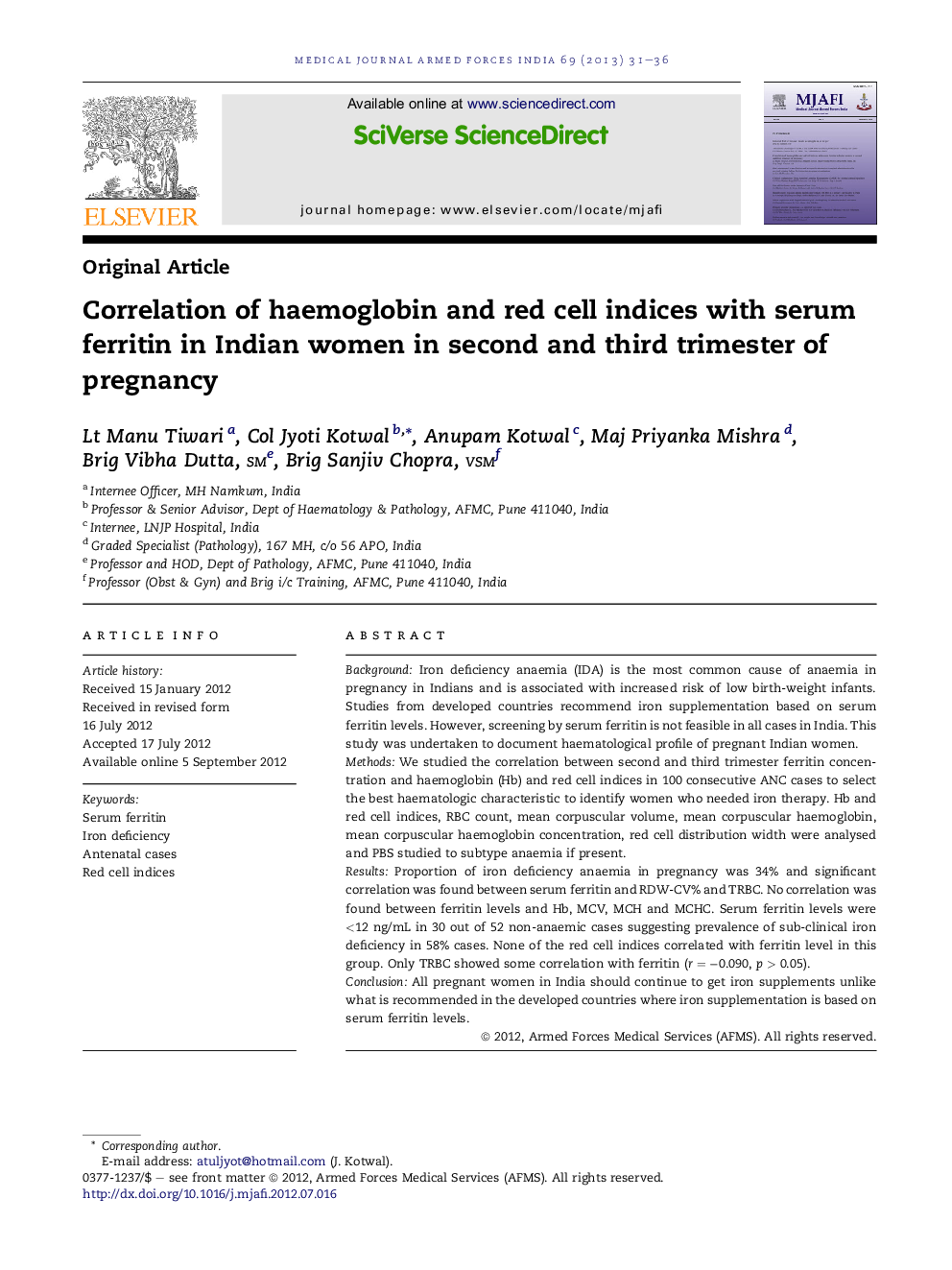| Article ID | Journal | Published Year | Pages | File Type |
|---|---|---|---|---|
| 3161549 | Medical Journal Armed Forces India | 2013 | 6 Pages |
BackgroundIron deficiency anaemia (IDA) is the most common cause of anaemia in pregnancy in Indians and is associated with increased risk of low birth-weight infants. Studies from developed countries recommend iron supplementation based on serum ferritin levels. However, screening by serum ferritin is not feasible in all cases in India. This study was undertaken to document haematological profile of pregnant Indian women.MethodsWe studied the correlation between second and third trimester ferritin concentration and haemoglobin (Hb) and red cell indices in 100 consecutive ANC cases to select the best haematologic characteristic to identify women who needed iron therapy. Hb and red cell indices, RBC count, mean corpuscular volume, mean corpuscular haemoglobin, mean corpuscular haemoglobin concentration, red cell distribution width were analysed and PBS studied to subtype anaemia if present.ResultsProportion of iron deficiency anaemia in pregnancy was 34% and significant correlation was found between serum ferritin and RDW-CV% and TRBC. No correlation was found between ferritin levels and Hb, MCV, MCH and MCHC. Serum ferritin levels were <12 ng/mL in 30 out of 52 non-anaemic cases suggesting prevalence of sub-clinical iron deficiency in 58% cases. None of the red cell indices correlated with ferritin level in this group. Only TRBC showed some correlation with ferritin (r = −0.090, p > 0.05).ConclusionAll pregnant women in India should continue to get iron supplements unlike what is recommended in the developed countries where iron supplementation is based on serum ferritin levels.
